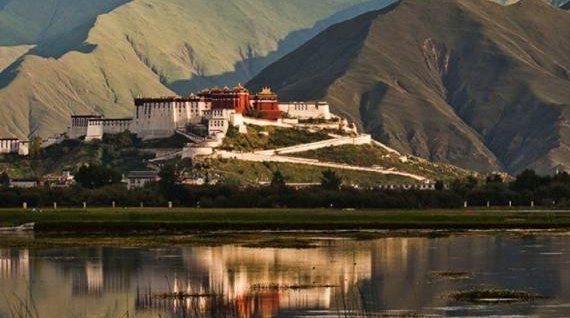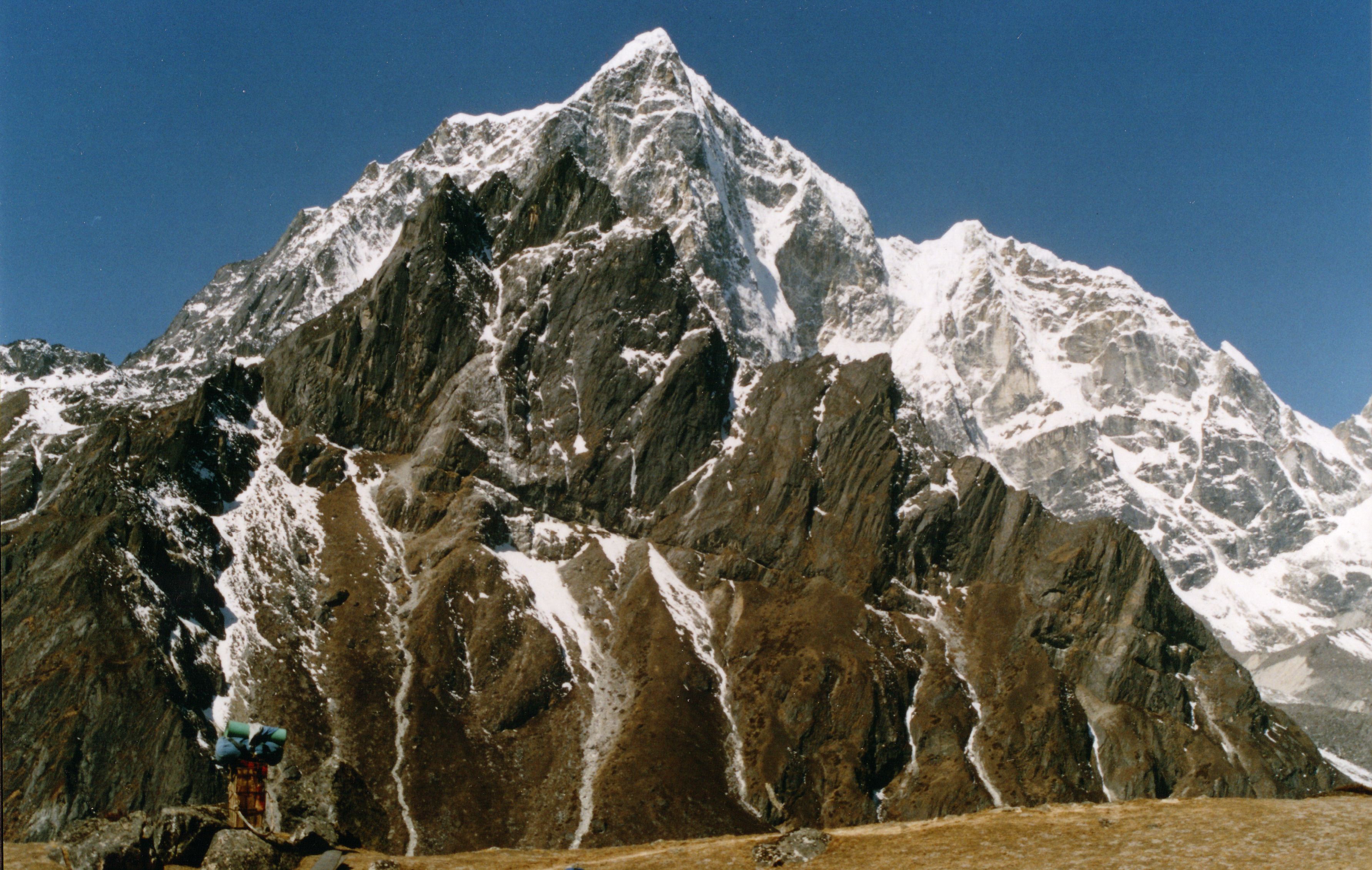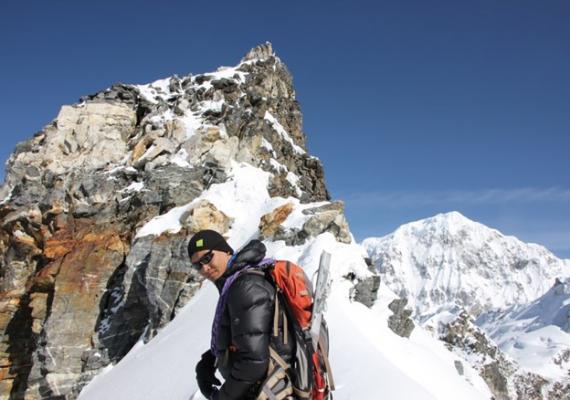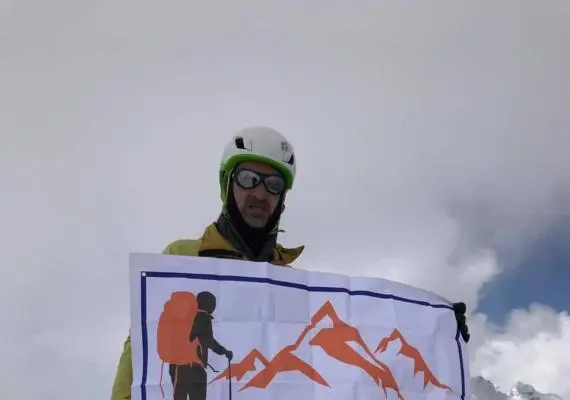Picture this: you're standing at the roof of the world, watching the sun paint Mount Everest golden while prayer flags flutter in the thin mountain air. This isn't just a dream—it's exactly what awaits you on a Nepal to Tibet tour package that combines the best of both worlds in one incredible journey.
Having crossed this legendary border myself, I can tell you there's something magical about transitioning from Nepal's vibrant chaos to Tibet's serene plateau. This Himalayan adventure tour takes you through ancient monasteries, turquoise lakes, and some of the world's highest mountain passes—all while experiencing two distinct yet interconnected cultures.
Why Choose a Nepal to Tibet Overland Adventure?
The Kathmandu to Lhasa tour offers something that flying directly to Tibet simply can't match—a gradual ascent through changing landscapes that helps your body acclimatize while your eyes feast on ever-changing vistas. This Tibet overland journey reveals the Himalayas in all their glory, from lush Nepalese valleys to Tibet's otherworldly plateau.
What makes this Tibetan culture experience truly special is the seamless blend of adventure and accessibility. You'll witness:
- Dramatic elevation changes from 1,350m in Kathmandu to over 5,000m at mountain passes
- Ancient trading routes that connected civilizations for centuries
- Buddhist monasteries perched impossibly on cliffsides
- The world's highest peaks, including close-up views of Mount Everest
- Traditional villages where time seems to stand still
- Sacred lakes reflecting snow-capped mountains in perfect symmetry
The overland route also offers practical advantages. Unlike flying directly to Lhasa at 3,650m, the gradual ascent significantly reduces altitude sickness risks. You'll have time to adjust while enjoying spectacular scenery—a win-win situation that makes this the best Tibet tour from Nepal for most travelers.
Essential Visa and Permit Requirements
Let me break down the paperwork—it's simpler than you might think! The Tibet travel permit process has been streamlined for travelers starting from Nepal. Understanding these requirements is crucial for smooth travel planning.
Tibet Group Visa from Nepal
Unlike individual Chinese visas, the Tibet visa from Nepal is issued as a group document, even if you're traveling solo. This unique system actually simplifies the process:
Required Documents:
- Valid Passport: Must have 6+ months validity from travel date
- Nepal Visa: Current tourist visa (easily obtained on arrival in Kathmandu)
- Passport Photos: Two recent passport-sized photos
- Personal Details: Occupation info (note: journalists, diplomats, and government officials face restrictions)
Processing Details:
- Tibet Travel Bureau (TTB) permit: Mandatory for all foreign travelers
- Processing time: 3-5 working days from Kathmandu
- Cost: Typically USD 85-125 (included in tour packages)
- Validity: Specific to your exact tour dates and itinerary
The Tibet entry permit process has evolved over the years. Your tour operator handles the complex bureaucracy, but understanding the process helps you prepare properly. The permits are technically Chinese group visas issued through the Chinese Embassy in Kathmandu, valid only for Tibet travel.
Current Travel Restrictions
Tibet travel restrictions 2025 maintain similar patterns to recent years:
- No Independent Travel: All foreign tourists must book through authorized agencies
- Fixed Itineraries: Your route must be pre-approved and followed
- Guide Requirements: A licensed Tibetan guide must accompany you throughout
- Restricted Areas: Some regions require additional permits
- Occupation Restrictions: Journalists, diplomats, and NGO workers face special scrutiny
These regulations might seem restrictive, but they've actually created a well-organized tourism infrastructure that makes travel surprisingly smooth once you're there.
Cultural Attractions That Define Tibet
The Tibetan Buddhism tour elements weave throughout your journey, offering insights into one of the world's most distinctive religious traditions. Each site tells stories of faith, artistry, and resilience.
Potala Palace: Architectural Marvel
Rising 117 meters above Lhasa, the Potala Palace stands as Tibet's most iconic symbol. This Tibetan cultural heritage tour centerpiece contains:
Historical Significance:
- Built in 7th century, rebuilt in 17th century
- Traditional seat of Dalai Lamas
- 1,000+ rooms (200,000+ square meters)
- UNESCO World Heritage Site since 1994
Visitor Experience:
- Limited daily visitors (booking essential)
- 1-hour time limit inside
- No photography in chapels
- Steep stairs require moderate fitness
Must-See Highlights:
- Great West Hall: Largest hall with beautiful murals
- Dalai Lamas' Tombs: Stupas covered in gold and gems
- Sacred Chapels: Countless Buddha statues and thangkas
- Cave of Dharma King: Original 7th-century meditation cave
Jokhang Temple: Tibet's Spiritual Center
While Potala impresses with grandeur, Jokhang touches the soul. This Tibet monastery tour essential predates Potala and remains Tibet's most sacred site.
Why It's Special:
- Houses Jowo Shakyamuni statue (most sacred in Tibet)
- Architectural blend of Tibetan, Chinese, Nepalese, Indian styles
- Active pilgrimage site with constant devotional activity
- Traditional butter lamp offerings create mystical atmosphere
Tashilhumpo Monastery: Seat of Panchen Lamas
This massive complex in Xigatse rivals Potala in importance. Your Xigatse monastery tour reveals:
Architectural Highlights:
- Maitreya Chapel: World's largest gilded Buddha statue
- Philosophy Colleges: Active Buddhist education center
- Thangka Wall: 500-year-old display tradition
- Kelsang Temple: Intricate murals and statuary
Cultural Insights: The monastery demonstrates Tibetan Buddhism's scholarly tradition. Monks engage in dramatic philosophical debates, using ritualized gestures to emphasize points—fascinating to witness during afternoon sessions.
Gyantse Kumbum: Architectural Uniqueness
The Gyantse cultural tour centers on this extraordinary stupa containing:
- 77 chapels on 6 floors
- 10,000+ painted images
- Mandala architectural design
- 360-degree valley views from top
Climbing the internal stairs reveals progressive Buddhist cosmology through art—a vertical pilgrimage experience.
Himalayan Scenic Highlights
The Mount Everest view tour possibilities extend beyond single viewpoints. Your journey offers multiple perspectives of the world's highest peaks.
Mountain Viewing Opportunities
From Gawula Pass (Day 3): On clear days, witness an incredible panorama:
- Mount Everest (8,849m)
- Lhotse (8,516m)
- Makalu (8,485m)
- Cho Oyu (8,188m)
- Shishapangma (8,027m)
From Tingri Plains: The classic north face view of Everest appears as a black pyramid among white peaks. Morning light creates the most dramatic photography.
From Various Passes: Each mountain pass offers unique perspectives. The Himalayan scenery tour isn't limited to famous peaks—the entire plateau provides otherworldly landscapes.
Sacred Lakes of Tibet
Yamdrok Lake - The Turquoise Jewel: This sacred lake's Yamdrok Lake tour package highlights include:
- Spiritual Significance: One of three holy lakes protecting Tibet
- Unique Color: Turquoise hue changes with light and season
- Size: 638 square kilometers of pristine water
- Wildlife: Bar-headed geese, black-necked cranes (seasonal)
- Local Legends: Said to be transformation of a goddess
Photography Tips:
- Best light: Early morning or late afternoon
- Multiple viewpoints: Each bend reveals new perspectives
- Include foreground: Prayer flags or mani stones add context
- Polarizing filter: Reduces glare and enhances colors
River Systems and Valleys
The Brahmaputra river tour sections showcase:
Yarlung Tsangpo (Upper Brahmaputra):
- Source near Mount Kailash
- Fertile valleys supporting agriculture
- Traditional villages along banks
- Eventually becomes mighty Brahmaputra in India
Agricultural Landscapes: Tibet isn't all barren plateau. River valleys support:
- Barley cultivation (tsampa flour staple)
- Limited vegetable growing
- Yak and sheep grazing
- Traditional irrigation systems
Travel Logistics and Practical Tips
Understanding the practical aspects ensures smooth travels. Here's comprehensive guidance for your journey.
Transportation Options
Kathmandu to Tibet Entry: While the Kathmandu to Tibet flight exists (to Lhasa), overland travel offers superior experiences:
Overland Advantages:
- Gradual altitude acclimatization
- Scenic journey as part of adventure
- Cultural transitions visible
- Photography opportunities unlimited
- Cost-effective option
Vehicle Types:
- Standard Package: Comfortable van/bus depending on group size
- Upgrade Options: Land Cruiser for smaller groups
- Road Conditions: Mostly paved, some rough sections
Accommodation Standards
The Tibet tour package 2025 includes carefully selected accommodations:
Kathmandu: 3-star hotel with breakfast Border Towns: Best available (basic but clean) Xigatse/Gyantse: 3-star Tibetan-style hotels Lhasa: 3-star hotel near city center
What to Expect:
- Twin-sharing rooms (single supplement available)
- Hot water (limited hours in remote areas)
- Heating (important in winter months)
- Basic amenities (bring toiletries)
Food and Dining
While breakfast is included, understanding meal options helps planning:
Typical Costs:
- Lunch: USD 5-10 per person
- Dinner: USD 8-15 per person
- Snacks/drinks: USD 2-5
Food Types Available:
- Tibetan: Momos, thukpa, butter tea
- Chinese: Wide variety in cities
- Western: Limited but available in Lhasa
- Vegetarian: Possible but limited options
Dietary Tips:
- Avoid heavy meals at altitude
- Stay hydrated (3-4 liters daily)
- Bring energy bars for travel days
- Try yak products (unique to region)
Health and Altitude Considerations
The high altitude travel aspect requires serious preparation:
Acclimatization Schedule:
- Day 1: 1,350m (Kathmandu)
- Day 2: 1,800m (Border)
- Day 3: 4,350m (Tingri) - Biggest jump
- Day 4-8: 3,650-5,200m (Various)
Altitude Sickness Prevention:
- Ascend gradually (built into itinerary)
- Stay hydrated constantly
- Avoid alcohol initially
- Consider Diamox (consult doctor)
- Rest if symptoms appear
Common Symptoms:
- Mild headache (normal)
- Slight breathlessness (expected)
- Disrupted sleep (temporary)
- Decreased appetite (monitor)
Warning Signs (Seek Help):
- Severe headache
- Persistent vomiting
- Confusion/coordination loss
- Breathing difficulties at rest
Money Matters
Understanding costs helps budget appropriately:
Included in USD 1,175 Package:
- All transportation
- English-speaking guide
- Accommodation (twin-sharing)
- Daily breakfast
- All permits and visas
- Monastery entrance fees
- Lhasa-Kathmandu flight
- Airport transfers
Budget for Exclusions:
- Lunches: USD 40-80 total
- Dinners: USD 65-120 total
- Drinks/snacks: USD 30-50
- Tips: USD 50-80 (guide/driver)
- Souvenirs: Variable
- Travel insurance: Essential
Currency Tips:
- Chinese Yuan preferred
- USD accepted some places
- ATMs limited outside Lhasa
- Credit cards rarely accepted
- Bring sufficient cash
Packing Essentials
Proper gear ensures comfort across varying conditions:
Clothing (Layering System):
- Base layers (thermal underwear)
- Insulating layers (fleece/down jacket)
- Outer shell (windproof/waterproof)
- Comfortable trekking pants
- Sun hat and warm beanie
- Gloves (wind can be brutal)
Essential Gear:
- Sunglasses (high UV protection)
- Sunscreen (SPF 50+)
- Lip balm with SPF
- Day pack for excursions
- Water bottles (2 liters capacity)
- Headlamp/flashlight
- Basic first aid kit
Electronics:
- Camera with extra batteries (cold drains power)
- Power bank for devices
- Universal adapter (China plug type)
- Memory cards (plenty of photo ops)
Comfort Items:
- Wet wipes (limited shower access)
- Hand sanitizer
- Toilet paper (not always provided)
- Snacks from home
- Book/e-reader for travel days
Best Time to Visit
The best time to visit Tibet from Nepal depends on priorities:
April-June (Spring/Early Summer):
- Pros: Warming temperatures, flowers blooming, clear skies common
- Cons: Occasional spring storms, increasing tourists
- Ideal for: Photography, comfortable travel
July-August (Monsoon):
- Pros: Warmest weather, green landscapes, festivals
- Cons: Possible road delays, cloudy skies
- Ideal for: Cultural experiences, budget travel
September-October (Autumn):
- Pros: Crystal-clear skies, perfect temperatures, harvest season
- Cons: Peak tourist season, higher prices
- Ideal for: Mountain views, overall best conditions
November-March (Winter):
- Pros: Minimal tourists, clear skies, authentic experiences
- Cons: Very cold, some passes may close, limited services
- Ideal for: Solitude seekers, photography
Communication and Connectivity
Staying connected requires planning:
Internet Access:
- Limited WiFi in hotels
- Chinese SIM cards restricted
- VPNs blocked in China
- Download offline maps beforehand
Phone Service:
- International roaming expensive
- Local SIMs require Chinese ID
- Consider pocket WiFi rental
- WhatsApp/Facebook blocked
Emergency Contacts:
- Tour operator 24/7 number
- Guide's mobile number
- Embassy contacts
- Travel insurance hotline
Cultural Insights and Etiquette
Understanding local customs enhances experiences and shows respect:
Religious Sites Behavior
Do's:
- Walk clockwise around religious objects
- Remove hats in temples
- Dress modestly (cover shoulders/knees)
- Ask before photographing people
- Make small donations at temples
Don'ts:
- Point feet toward altars
- Touch religious statues/artifacts
- Photograph inside chapels
- Disturb meditation/prayers
- Smoke near religious sites
Interacting with Locals
Tibetans are generally warm and welcoming. Enhance interactions by:
Basic Tibetan Phrases:
- "Tashi Delek" - Hello/Good luck
- "Thuche" - Thank you
- "Gonang yin" - Goodbye
- "Nga Amerika/India ne yin" - I'm from America/India
Cultural Sensitivity:
- Avoid political discussions
- Respect photo preferences
- Support local businesses
- Learn about Buddhism basics
- Show interest in culture
Shopping and Bargaining
The Barkhor Bazaar tour and other markets offer:
Authentic Items:
- Prayer wheels and flags
- Thangka paintings
- Turquoise jewelry
- Yak wool products
- Singing bowls
- Incense and herbs
Bargaining Tips:
- Start at 40-50% asking price
- Walk away if too expensive
- Compare prices between stalls
- Buy from monastery shops for fixed prices
- Avoid antiques (export restrictions)
Making Your Decision: Why Choose This Tour?
This Nepal Tibet group tour stands out for several reasons:
Value Proposition
Comparing Kathmandu to Tibet tour price options reveals excellent value:
Included Services Worth:
- Private transport: USD 400-500
- Permits/visas: USD 150-200
- Guide services: USD 300-400
- Accommodations: USD 200-300
- Kathmandu hotel: USD 50-80
- Return flight: USD 300-400
- Total Value: USD 1,400-1,880
Package Price: USD 1,175 (Save USD 225-705)
Tour Quality Indicators
This Kathmandu to Tibet guided tour excels through:
Professional Management:
- Established operator experience
- 24/7 support during travel
- Experienced English-speaking guides
- Proper licensing and insurance
- Proven safety record
Flexibility Options:
- Single supplement available
- Dietary requirements accommodated
- Optional activities possible
- Extended stay arrangements
- Custom itinerary modifications
Transformation Through Travel
Beyond logistics, this Tibet overland adventure from Nepal offers:
Personal Growth:
- Challenge comfort zones safely
- Gain cultural perspectives
- Create lifetime memories
- Connect with fellow travelers
- Experience spiritual insights
Unique Experiences:
- Sunrise at world's highest peaks
- Tea with monks in monasteries
- Shopping in ancient bazaars
- Crossing dramatic mountain passes
- Witnessing living Buddhist culture
Booking Your Tibet Adventure
Ready to embark on this incredible journey? Here's how to secure your spot:
Booking Process
- Initial Inquiry: Contact operator with preferred dates
- Availability Check: Confirm space and permit possibilities
- Documentation: Submit passport copies and photos
- Deposit: 10% payment secures booking
- Permit Processing: Begins 3-4 weeks before travel
- Final Payment: Due 2 weeks before departure
- Pre-Departure: Receive final documents and briefing
Preparation Timeline
2 Months Before:
- Book tour and flights
- Start fitness preparation
- Arrange travel insurance
- Check passport validity
1 Month Before:
- Submit permit documents
- Book accommodations extra nights
- Start altitude preparation
- Arrange equipment/gear
2 Weeks Before:
- Final payment due
- Confirm all arrangements
- Pack and prepare
- Health check-up
1 Week Before:
- Receive final documents
- Exchange currency
- Final gear check
- Rest and hydrate
Final Thoughts: Your Himalayan Dream Awaits
This Nepal to Tibet tour package offers more than just a vacation—it's a transformative journey through Earth's highest landscapes and most profound spiritual sites. From crossing the friendship bridge to witnessing sunrise over Everest, every moment creates memories that reshape your perspective on life.
The Himalayan adventure tour you've been dreaming about is just one decision away. With improved infrastructure, experienced guides, and seamless logistics, there's never been a better time to explore the roof of the world.
Don't let another year pass wondering "what if." Your Tibet overland journey begins with a simple message to Himalayan Hero Adventures, Nepal's trusted specialist in Tibet tours.
Ready to transform your dreams into reality? Contact us today:
The mountains are calling—let Himalayan Hero Adventures be your guide to answering their invitation.





